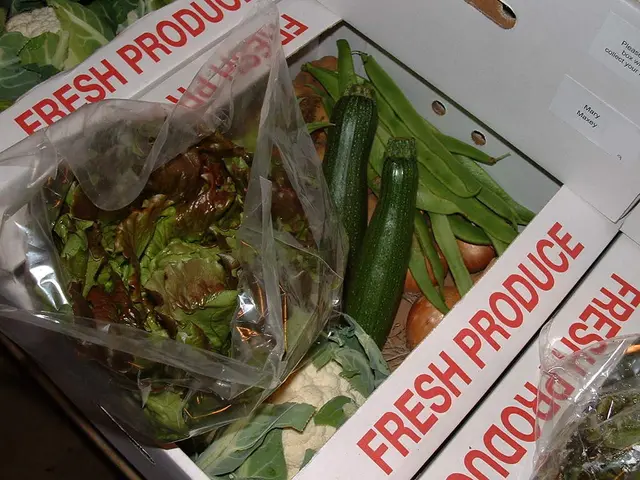Preparing Ground for American Ginseng Cultivation in Ohio through the Wild-Simulated Method: Guide to Site Preparation and Planting
Wild-simulated American ginseng cultivation in Ohio can be a rewarding endeavour, providing an income-generating pastime for over 200 years. Here's a comprehensive guide focusing on site selection, site preparation, and planting techniques for successful ginseng growth.
Site Selection
Choosing the right site is crucial for ginseng's growth. Opt for a woodland site with mature deciduous hardwood trees, ideally with at least 50% canopy cover. The site should have well-drained, loamy soil rich in organic matter and a slightly acidic pH (around 5.5 to 6.0). Avoid sites prone to standing water or heavy foot traffic. Sites with natural leaf litter and humus layers are ideal, as ginseng grows best in undisturbed forest soils with good moisture retention but no waterlogging.
Site Preparation
Minimize damage to the forest floor and native plants by clearing only small patches or carefully disturbing the soil. Remove competing vegetation that may overshadow or outcompete the ginseng seedlings, but avoid heavy disturbance. Maintain the forest's natural leaf litter layer, which protects and nourishes ginseng roots. Consider mulching with peeled hardwood leaves in spring to retain moisture and simulate the natural forest floor.
Planting Techniques
Use stratified ginseng seeds (seeds that have been cold-treated to break dormancy) in fall or early spring. In Ohio, you can purchase stratified seeds from sources like Rural Action. Sow seeds approximately 1 inch deep, spacing 6 to 12 inches apart in prepared patches or natural forest settings. Plant seeds with the hilum (scar) facing downward or sideways to promote root development.
Wild-simulated ginseng means planting seeds in a natural forest setting and allowing them to grow with minimal intervention, replicating wild conditions to improve quality and market value. Protect planted patches from deer browsing using fencing or repellents if needed.
Additional Tips and Resources
Growing wild-simulated ginseng is almost always done exclusively from seed. Each ounce of seed should cover approximately 100 square feet at the optimal seeding rate. Many growers like to use a variety of techniques to seed their wild-simulated ginseng. In sites where raking and other site preparation is difficult, ginseng can be planted by hand one seed at a time.
For detailed guidance, Ohio State University (OSU) and Purdue Extension offer fact sheets and guides on ginseng cultivation in Ohio that cover site selection, planting, and management practices tailored to the region. Consulting experienced local growers or specialists like Chip Carroll (who works extensively with forest-grown medicinal herbs in Ohio) can also provide valuable insights for successful wild-simulated ginseng cultivation.
Regulations and Laws
Ginseng is regulated under Ohio Revised Code Chapter 1533.87 (Ohio Ginseng Management Program Laws). It is illegal to market a ginseng root under five years of age in Ohio. This law also applies to wild-simulated ginseng growers because wild-simulated ginseng is typically not distinguished from wild ginseng in the marketplace.
Contact the Rural Action Forestry Program for information about how to obtain seed and planting stock of ginseng and other medicinal herbs. Site preparation work includes pruning small trees and shrubs, removing large rocks and sticks, and ensuring proper air circulation.
In summary, successful wild-simulated American ginseng cultivation in Ohio requires selecting the right shady, forested site with suitable soil, preparing the ground with minimal disturbance, planting properly stratified seed in fall or spring at the correct depth, and managing the site patiently over multiple years while maintaining natural forest conditions. The first year plants can be easily overlooked if one is not familiar with their appearance, so patience and observation are key.
Natural resources like the soil in chosen woodland sites should be well-drained, loamy, rich in organic matter, and have a slightly acidic pH for successful wild-simulated American ginseng cultivation. A home-and-garden lifestyle embracing gardening principles can help growers establish patches for ginseng, contributing to income-generating potential while cherishing the natural forest environment.
When preparing the site, homeowners should follow organic gardening methods and minimize damage to the forest floor, maintaining the natural leaf litter layer that protects and nourishes ginseng roots. The lifestyle of a home-and-garden enthusiast interested in permaculture and sustainable practices aligns with the holistic approach of wild-simulated ginseng cultivation, ensuring long-term growth and healthy plants.








